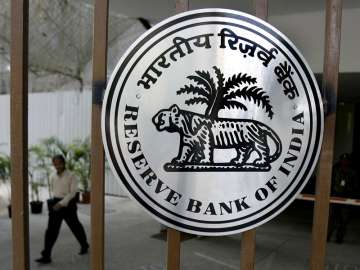RBI cuts key rate: Five factors that triggered the decision
In first rate cut since October 2016, the Reserve Bank of India on Wednesday slashed benchmark lending rate by 25 basis points from 6.25 per cent to 6.0 per cent.

In much relief to borrowers, the Reserve Bank of India today slashed the benchmark lending rate by 25 basis points from 6.25 per cent to 6.0 per cent. The move by RBI Governor-headed Monetary Policy Committee (MPC) will lower EMIs for home, auto and personal loans. This is the first rate cut since October 2016 and the interest rate is now at 6-year low. The reverse repo rate has also been cut to 5.75 per cent from 6.00 per cent.
The decision was taken by the MPC on the "basis of an assessment of the current and evolving macroeconomic situation" at its meeting today.
Announcing the rate cut, the RBI said in a statement, "The decision of the MPC is consistent with a neutral stance of monetary policy in consonance with the objective of achieving the medium-term target for consumer price index (CPI) inflation of 4 per cent within a band of +/- 2 per cent, while supporting growth."
Here are 5 factors the central bank took into considerations while deciding to cut the lending rate for the first time in 9 months:
1- Retail inflation: The biggest reason behind the RBI's decision to slash rates is the falling retail inflation. In June, retail inflation measured by year-on-year changes in the CPI plunged to its lowest reading in the series based to 2011-12. Prices of food and beverages sank further in June and fuel inflation declined for the second month in succession. India's retail inflation in June fell to 1.54 per cent, as compared to 5.77 per cent in the same month last year.
2- Monsoon: A normal and well-distributed south-west monsoon for the second consecutive year has brightened the prospects of agricultural and allied activities and rural demand, the RBI said.
3- Foreign investment: The RBI said that factors, such as foreign direct investments were also taken into considerations while taking the decision. Net foreign direct investment doubled in April-May 2017 over its level a year ago, flowing mainly into manufacturing, retail and wholesale trade and business services. Foreign portfolio investors made net purchases of US$ 15.2 billion in domestic debt and equity markets so far (up to July 31), remaining bullish on the outlook for the Indian economy. The level of foreign exchange reserves was US$ 392.9 billion as on July 28, 2017.
4- Global economy: The RBI said that since the last meeting of MPC in June 2017, impulses of growth have spread across the global economy albeit still lacking the strength of a self-sustaining recovery. Among the advanced economies (AEs), the US has expanded at a faster pace in Q2 after a weak Q1. The recovery has broadened in the EU area and Japan has also shown a modest but steady expansion. Among emerging market economies (EMEs), China has regained some lost ground in Q2 and the Russian economy has emerged out of two years of recession. However, Brazil's fragile recovery remains vulnerable to political uncertainty and South Africa is in a technical recession.
5- Global equity markets: International financial markets have been resilient to political uncertainties and volatility has declined, except for sporadic reactions to hints of balance sheet adjustments by systemic central banks. Equity markets in most advanced economies have registered gains, with indices crossing previous highs in the US, but European markets were weighed down by Brexit talks and the strengthening euro.